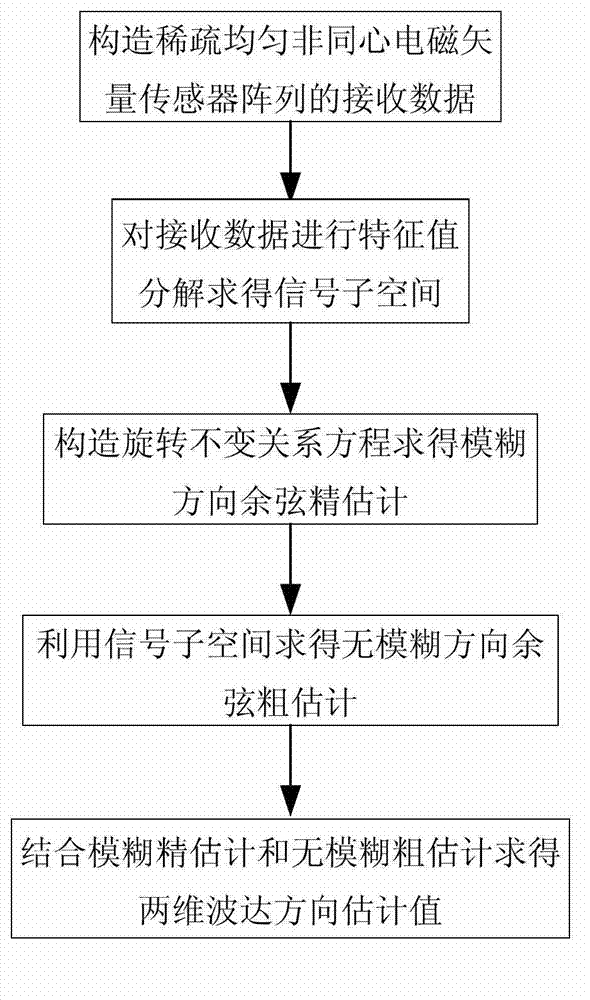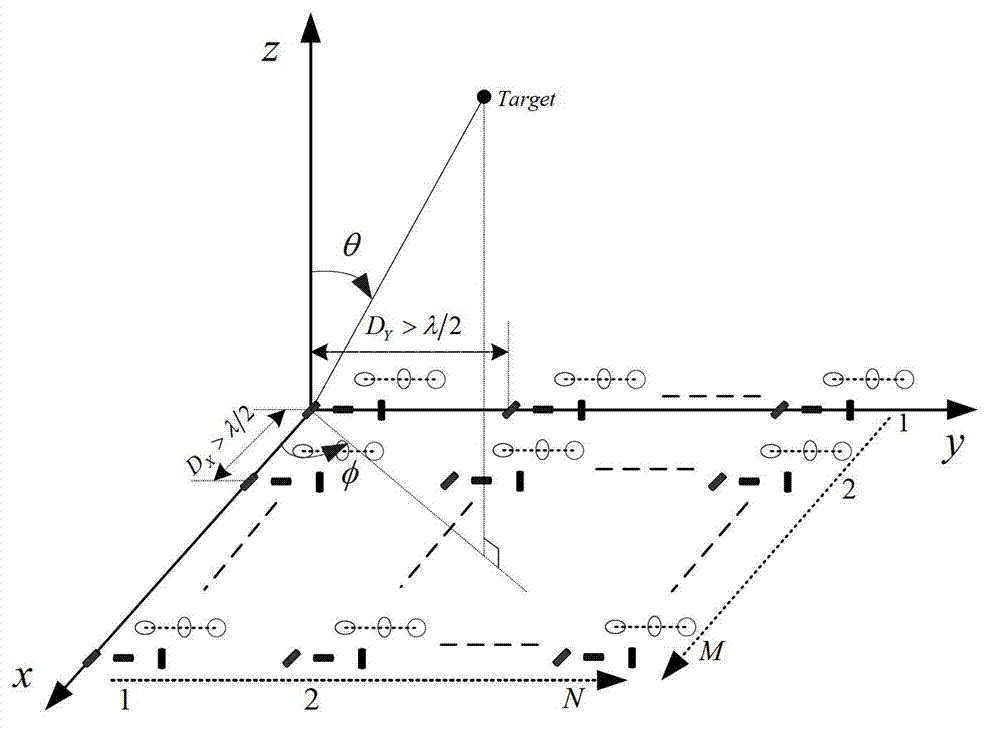Bidimensional wave arrival direction estimation method based on non-concentric electromagnetic vector array radar
A technology for direction of arrival estimation and electromagnetic vector, which is applied in radio wave measurement systems, radio wave reflection/reradiation, measurement devices, etc., can solve the problem that the form of incident signal source is more stringent and cannot obtain high precision of two-dimensional wave arrival Estimation and other issues
- Summary
- Abstract
- Description
- Claims
- Application Information
AI Technical Summary
Problems solved by technology
Method used
Image
Examples
Embodiment Construction
[0035] refer to figure 1 , the specific implementation steps of the present invention are as follows:
[0036] Step 1. Construct the received data of the sparse uniform non-concentric electromagnetic vector sensor array.
[0037] 1a) Set the following parameters:
[0038] electric dipole E x with electric dipole E y The distance is Δ x,y , the electric dipole E y with electric dipole E z The distance is Δ y,z , the electric dipole E x ,E y ,E z lie on the same straight line;
[0039] Magnetic ring H x with ring H y Δ x,y , magnetic ring H y with ring H z The distance is Δ y,z , magnetic ring H x 、H y 、H z located with the electric dipole E x ,E y ,E z on opposite parallel lines;
[0040] Magnetic ring H x The location coordinates of are set to (x h ,y h ,z h ), the placement angle of the two parallel straight lines at the position of the electric dipole and the magnetic ring is set to and define u ~ =...
PUM
 Login to View More
Login to View More Abstract
Description
Claims
Application Information
 Login to View More
Login to View More - R&D
- Intellectual Property
- Life Sciences
- Materials
- Tech Scout
- Unparalleled Data Quality
- Higher Quality Content
- 60% Fewer Hallucinations
Browse by: Latest US Patents, China's latest patents, Technical Efficacy Thesaurus, Application Domain, Technology Topic, Popular Technical Reports.
© 2025 PatSnap. All rights reserved.Legal|Privacy policy|Modern Slavery Act Transparency Statement|Sitemap|About US| Contact US: help@patsnap.com



